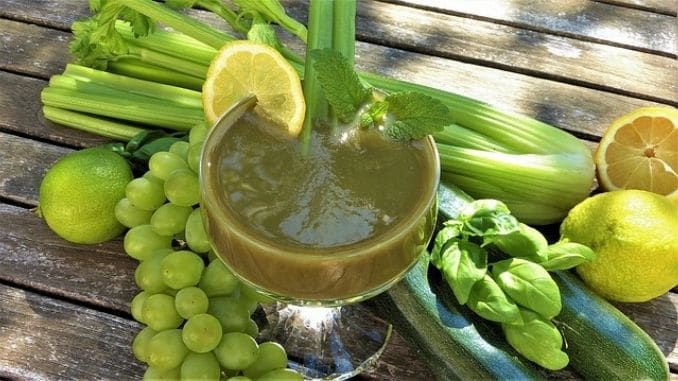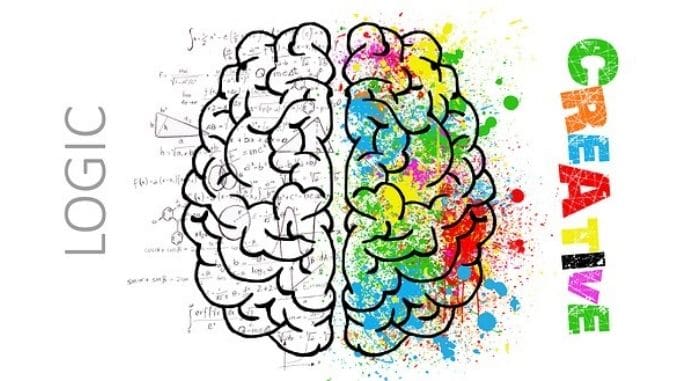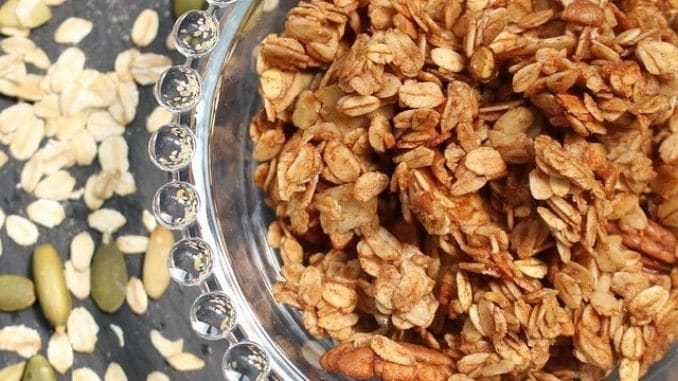
About a decade ago, most of us hadn’t heard of Greek yogurt. Today, the refrigerated aisle is full of it, with a multitude of flavors and brands from which to choose. If you’re eating more than you were 10 years ago, you have “health trends” to thank.
It was because of a trend that this probiotic-rich food became so popular, and we can embrace our desire to belong as getting more probiotics into our daily diet is good for us. So, what other trends might we find beneficial?
We’ve got seven of them below. Keep your eye out for these as you’re likely to hear a lot more about them in the coming months.
1. Celery Juice
This trendy drink is likely to explode in popularity this year. It’s already showing up on thousands of Instagram posts and websites, with fans saying it helps with eczema, infertility, mental health, and even cancer.
We don’t have studies showing it can do all that, but celery is a nutritious food, providing a healthy dose of fiber along with vitamins C and K and potassium. It’s low in calories and rich in water, so it’s a healthy snack particularly for those trying to lose weight.
Juicing the celery increases the calories a little bit, but a cup of celery juice still contains only about 42 calories. It doesn’t have the fiber that a stalk of celery has, so you may be better off eating the real thing rather than juicing it.
If you’d like the try the juice, however, drink it on its own first thing in the morning as it may help with digestive problems like gas, bloating and constipation.
2. Circadian Rhythms
The circadian rhythm — also called the natural body clock or master clock — is the biological mechanism that controls sleep and wake cycles. It’s responsible for releasing the hormones needed to induce wakefulness or sleepiness, and it also helps manage things like digestion and ovulation.
Because this natural body clock relies on exposure to natural light like the sun, our modern-day way of living tends to mess it up, disrupting the release of hormones and potentially interfering with quality sleep.
Staying up late, working on our computers and cellphones, failing to get some sun and forcing ourselves to stay awake when we want to sleep can upset our circadian rhythms, which scientists now know can increase the risk of obesity, diabetes, sleep problems, depression, dementia and even certain diseases like heart disease and cancer.
This year, you can expect to hear more about how you can adopt a circadian rhythm-friendly lifestyle, which is likely to include increasing exposure to natural light, dimming the lights at night, reducing the use of computers and cellphones before bed and going to bed and getting up at the same time every day.
3. Ayurveda
This ancient form of medicine is seeing a resurgence among the holistic health crowd and is likely to break out into the mainstream, even more, this year. If you’re using ghee ― clarified butter ― more than you used to, you can thank this trend as ghee is as a fixture in Ayurvedic cooking.
Brands of Ayurvedic products are growing more plentiful in whole foods stores as well as in the organic and health food departments of regular grocery stores. New Ayurvedic cookbooks are already on the shelves, and Ayurvedic herbs — including holy basil, amla, Shatavari and Triphala, all of which can be brewed in tea or used as supplements — are becoming more popular.
Ayurvedic medicine has always been about tending to the whole person, rather than just a certain part that may be hurt or diseased. Practitioners seek to bring into equilibrium the entire personality and help promote wellness by balancing mind, body, and spirit through diet, herbs, yoga, massage and even skin care treatments.
4. Endocannabinoid System
As more states pass laws legalizing marijuana and hemp oil products, we’re going to be hearing more about the endocannabinoid system (ECS).
The ECS is made up of receptors in the nervous system that bind with the natural endocannabinoids in our bodies. It helps regulate a lot of important functions, including appetite, digestion, immune function, mood, sleep, temperature, memory, motor control, pleasure and reward, and even memory. The body releases endocannabinoids naturally to bring things into balance when needed, then releases enzymes to break them down when they’re no longer required.
This system can also interact with the compounds found in cannabis. Cannabis is a type of plant used to produce hemp fibers and marijuana. Depending on the variety of cannabis, the plant either contains a high amount of tetrahydrocannabinol (THC), which is the mind-altering compound in marijuana, or a very low to a nonexistent amount of THC.
When we take in compounds from the cannabis plant, they can affect us profoundly, as they act as our own natural cannabinoids, attaching to our receptors and affecting our mental and physical health. As scientists learn more about how the various compounds in the different cannabis plants do this, we’re likely to see more products available that may benefit our health.
The recent passage of the farm bill removed industrial hemp from the Controlled Substances Act, allowing farmers to grow hemp again in all 50 states. This is likely to feed the growth of hemp products, including cannabidiol (CBD) products.
CBD is the non-intoxicating compound found in cannabis. It does not make a person “high,” but it may have health benefits. There is already evidence supporting its use in reducing epileptic seizures. It may also help treat symptoms of anxiety, though more research is needed. Hemp is the primary source of CBD and is a variety of the cannabis plant that contains less than 0.3 percent of the intoxicating compound THC.
5. Brain Health
Current predictions show that by the year 2050, nearly 14 million Americans will be diagnosed with Alzheimer’s disease. In the hopes of avoiding that future, scientists are scrambling to more about the brain and how we can protect it.
So far, we’ve discovered that what we thought were only physical diseases, including heart disease and diabetes, can damage the brain and erode our mental health. Adopting healthy lifestyle tips that reduce our risk of these diseases may help us avoid Alzheimer’s and other forms of dementia as well.
We’ve also learned that the brain is affected by a lot of different things. Diet, for example, can affect focus and memory, gut health ― and the microbiome ― can affect mood, and even pollution may play a part in increasing the risk of in Alzheimer’s.
In response to these new findings, we will hear more this year about healthy diets for the brain, or “brain diets” as well as supplements that help promote brain health like antioxidants and anti-inflammatories.
“Natural nootropic” functional drinks and supplements are coming onto the market, claiming to help with brain fog, memory, anxiety, and focus. Common nutrients found in these products include vitamins B, magnesium, 5HTP, L-theanine, gingko biloba and adaptogenic herbs that help manage stress.
You’ll also find more advice popping up about how to improve emotional health and mood, and how to make routine changes that will help promote optimal brain health.
6. Oat Milk
If you’re tired of almond milk, you’re in luck as now there’s something new on the market — oat milk. Production has increased during the past year and, as more people seek out alternatives to dairy milk, oat milk is positioned perfectly to become more pervasive in the refrigerated section.
One of the things propelling this product’s renewed popularity is its ability to foam up just like dairy milk. That’s already made it popular for lattes, milkshakes and other favorites. Oats require less water and fewer herbicides to grow than almonds, making the product more environmentally friendly, and they provide a good source of soluble fiber necessary for good digestive health.
Oat milk contains a little more protein than almond milk. However, as it comes from carbohydrate, it does contain more sugar as well. Bottom line — for many, it just tastes better than almond milk and its consistency is more like cow’s milk.
7. Shelf-stable Probiotics and Prebiotics
Probiotics aren’t new, but this year we’re going to see more probiotic-rich products showing up on the shelf. Manufacturers have learned more about how to stabilize these beneficial bacteria, so food companies are adding them to granola, oatmeal, nut butter, soups, nutrition bars, and pasta.
Probiotics are also showing up in beauty products like lotions, creams, and sunscreen as well as in cleaning products. Meanwhile, we’ll hear more about getting our probiotics from foods, including yogurt, sauerkraut, kombucha tea, miso, kimchi, and pickles.
In a related trend, more products are incorporating “prebiotics,” which are types of dietary fiber that help nourish probiotics in the gut. As we learn more about how gut health affects overall health, awareness of prebiotics has increased, and now customers want to know how they can incorporate these helpful nutrients into their diet.
Natural foods containing prebiotics include garlic, leeks, onions, asparagus, wheat bran, bananas, chicory root, barley, apples, cocoa, jicama root, seaweed, and oats.
For the best foods to heal and slim your body, check out The Best Foods that Rapidly Slim & Heal in 7 Days, here!







